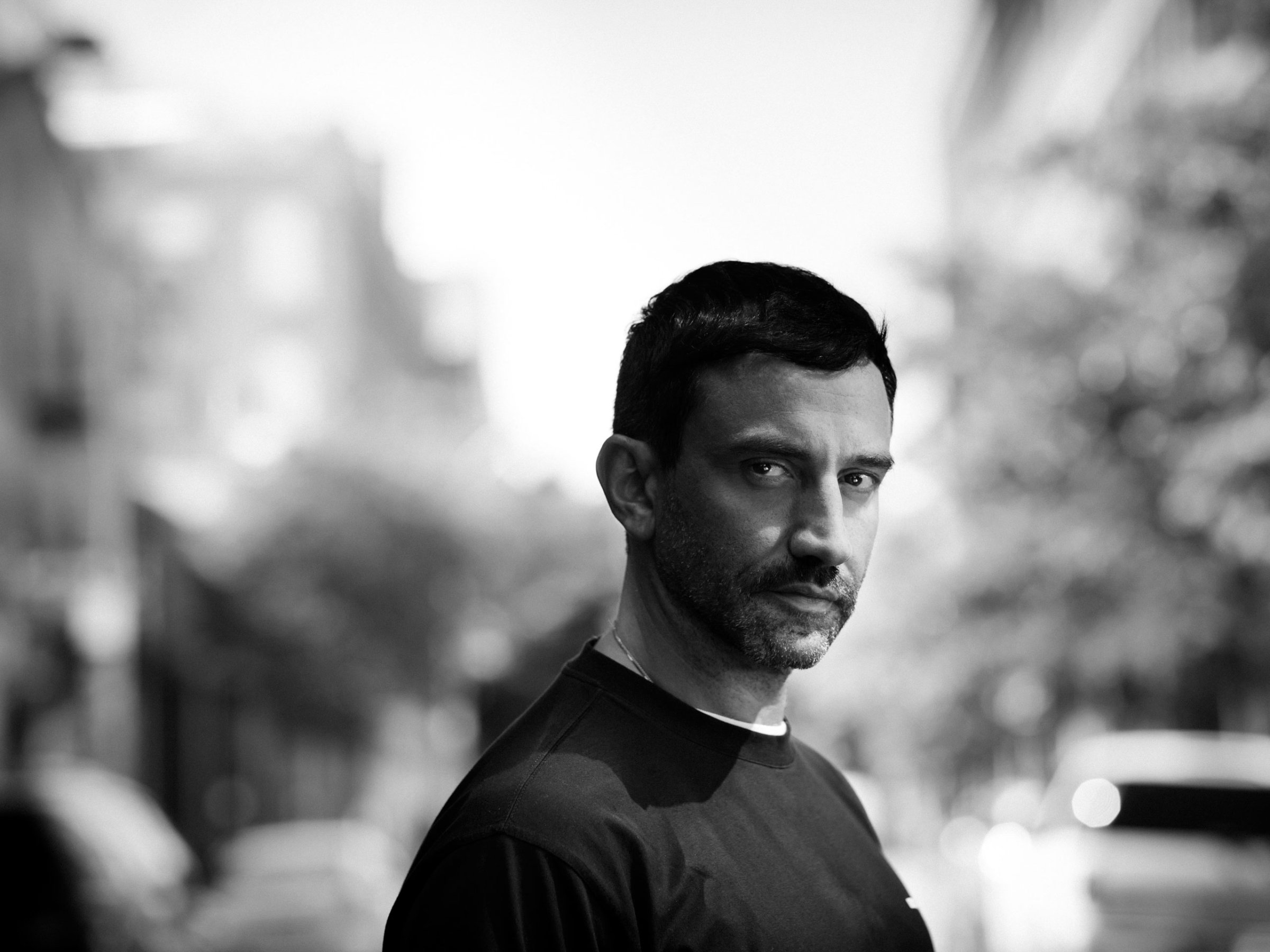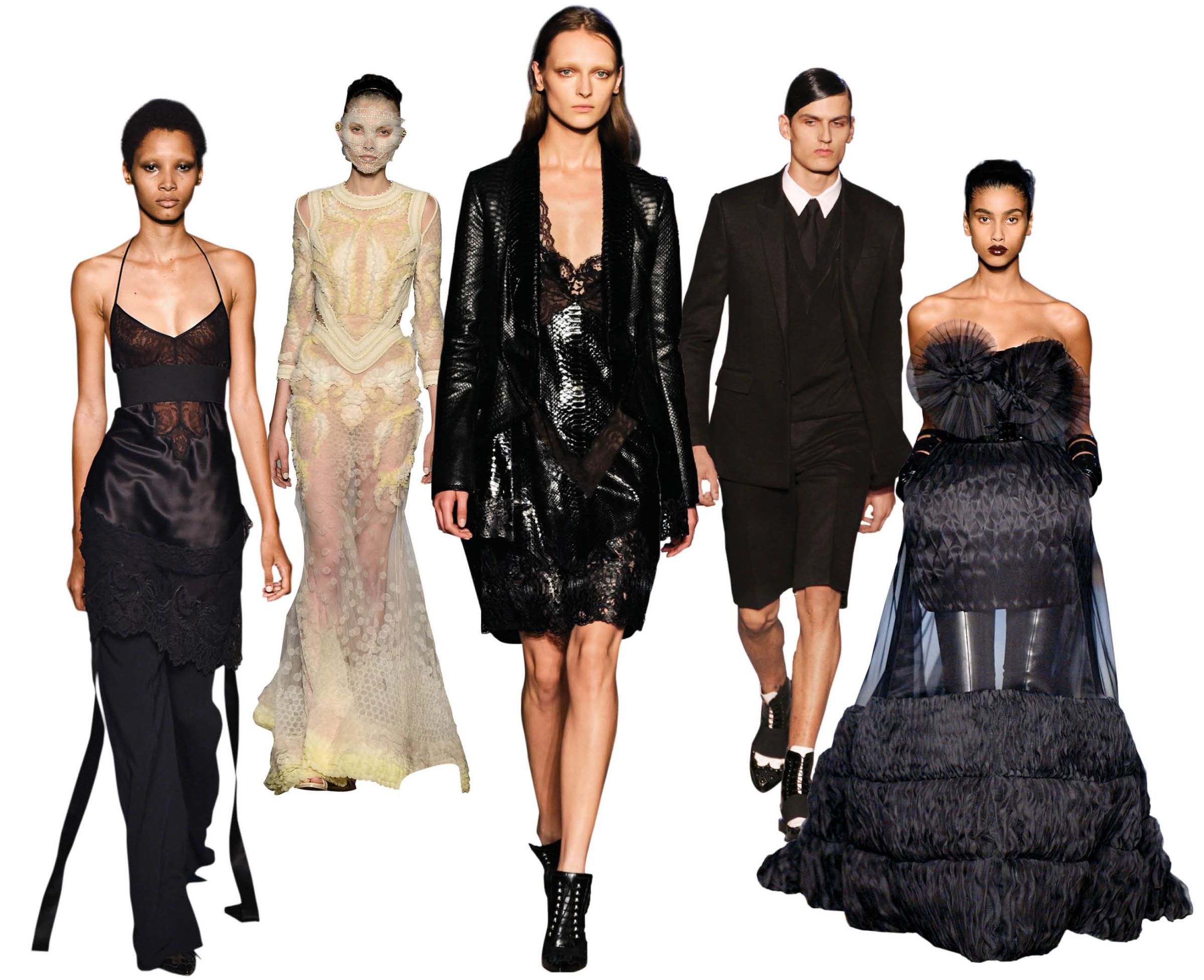
It has been a decade since luxury conglomerate LVMH put the unknown Riccardo Tisci at the creative helm of Givenchy, one of fashion’s most revered but, at the time, broken houses. Tisci grew up poor, the youngest of nine children and the only son, in a coastal town in southern Italy. Within six years of graduating from design school, he was handed an enviable position at Givenchy in an insular and competitive industry. Tisci marked his collections with an ink-blot-dark melancholic romanticism, in sharp contrast not only to the hallmarks of Givenchy—Audrey Hepburn’s LBD in Breakfast at Tiffany’s comes to mind—but also with the glam thrust of fashion at the time. That moody beauty became his signature aesthetic and is now copied the world over. Tisci has racked up celebrity muses and fans—Madonna, Rihanna, Cate Blanchett—and Givenchy, the receipts for season after season of It items. And some major flux in major French fashion has recently positioned the designer as de facto Establishment. Last season alone, Alber Elbaz was pushed out at Lanvin, Raf Simons bowed out at Dior, and Balenciaga was handed over to wild card Demna Gvasalia. While these labels find their equilibrium, it is Tisci, at Givenchy, who can offer a consistency of chic.
Do you think there’s such a thing as good and bad taste? I don’t think so. Taste is very personal. Taste for me is the borderline between something that could be beautiful and something so ugly it has a strong beauty. When I arrived 10 years ago, what I was doing was very languid, more dark, much more sensual. People didn’t really accept it. But after 10 years, I am considered one of the people who know how to make women beautiful and to make things that are very tasteful. And that, in a way, is funny. You can open any housewife magazine now and see different references to the “Gothic Lady” trend. So that is cool.
Is there a universal ideal of beauty? Some of it is education. There are only a few things that everyone will recognize as beautiful—like Michelangelo. And these things get pressed on people, no matter which country. Everybody knows that Brooke Shields is one of the most beautiful people in the world. And she is.
With society catching up to your aesthetic, do you have anxiety around needing to change? When you have it in your blood, nobody can take it away. I worked a lot on my identity. It would make me happy when I would see journalists writing “Riccardo Tisci black.” I didn’t invent black color, but people related so much black to me, which is a very beautiful thing.
What role does fashion play in inspiring others? Everybody has a different style, and everybody has a different belief. Groups, gangs, tribes. In fashion, you have people that follow a style and people that are making a style. And there are still essential designers with a strong point of view. They are not only selling you clothing—they sell you an identity; they sell you a journey. When they’ve done that, they’ve created tribes and they’ve created soldiers. You feel certain things when you go to Givenchy. Our women and our men are very strong and recognizable.
At a house with such a distinct identity, how do you renew your inspiration? During the show period, I am so intensely there. But when the show is finished—the moment right after—I need a culture shock. Not to forget what I’ve done, but I need to kind of jump in the water, to feel clean. Other designers talk about reading magazines and seeing this film or that, but that never happens to me. I wish I was like that.
So where does all the magic come from? Most of the time I start the collection thinking of things happening in my life. This season was love. I suffered four years ago for love. Very strongly. I went to the dark place. And since then, I always thought that love was not there anymore. I was so scared about love and then lately I met people, and I changed. I grew up. And that brought me back to when I was 7 years old. I brought my sister to her own wedding because my father had died. I was the little boy bringing my sister to the altar. It was so emotional to me. The bride, the love, the belief in love. Something that was very pure and fresh.

How do you manage designing for a luxury house that also is very much in tune with its young fans? In the beginning, when I was doing couture I would go back to Milan, and my sister’s children loved what I was doing but they were like, “Oh, it’s so expensive.” And that took me back to when I was young, dreaming about being part of the Gianni Versace lifestyle that I couldn’t afford. I was saving money to buy Helmut Lang jeans because I was obsessed. And so today at Givenchy, one of the most important things is that you can go and buy a $300,000 couture dress, but you can buy a sweatshirt, trainers, a jersey top as well.
How do you come up with the iconography in your collections—the Bambi, the Madonna, the Rottweiler? It comes from my guts. I am a Leo. Usually for a Leo, if you tell him not to do something, he’s doing it. Which luxury house in history would put an upset dog on a jumper? Nobody. And it came up because I love Rottweilers. They are such a sweet dog, but the most beautiful moment is when they are aggressive. When I first did the collection, my team looked at me laughing, saying I was going to be canceled. We sold 2,000 pieces the first show—and it’s still one of the best sellers.
You are active on social media—you have a million followers on Instagram. How does it factor into your creative process? A million and one. When I first started I actually hated it. Then at some point, I understood deeply what it was about. Some people use it to promote themselves. I put up inspiration pictures, celebrities, traveling, more about my life. I was shocked in the beginning when I was getting all these comments—kids from Yugoslavia, China, Australia, New York. They would say things that brought me back to when I was young and I dreamed to be part of this beautiful world.
Givenchy has a very strong celebrity “gang.” Is it organic or strategic? I don’t use it as a vision. I don’t dress people just to have somebody on the red carpet. With us, it’s a proper relationship. This collection is black and white and it’s super Julia Roberts. Probably the one before was less Julia Roberts. I don’t want to stick a Spanish dress on Julia Roberts and put it on the red carpet. It would be wrong. Julia is a very intelligent woman and knows what she wants. She knows that from me she can get that.
You have been dressing the Kardashians for four years now. Of all the clan, who is your favorite to dress? Of course, my close one is Kim. I met Kim first through Kanye because I worked with Kanye and we’re really close friends. I promise today that I didn’t see one episode of [Keeping Up With the Kardashians]. I just went to Kris’s 60th-birthday party. Kim’s a hard worker, an amazing girl. Kourtney’s really beautiful and really elegant. And Kendall. We started her [modeling] career. I love all of them.
You showed Givenchy’s spring/summer 2016 ready-to-wear collection in New York City on Sept. 11. The show was a love letter to love, but also to America. Why are you so in love with America? Most of the Italian immigrants that came to America became successful. We have so many stories … Sophia Loren, Pacino, Madonna, even Gaga. America can be a very conservative country, but it’s a country that gives a chance to people. If you have something to say, America listens to you. It’s a very rare thing in the world.
Foxman is the editorial director of InStyle
This appears in the December 28, 2015 issue of TIME.
More Must-Reads from TIME
- Cybersecurity Experts Are Sounding the Alarm on DOGE
- Meet the 2025 Women of the Year
- The Harsh Truth About Disability Inclusion
- Why Do More Young Adults Have Cancer?
- Colman Domingo Leads With Radical Love
- How to Get Better at Doing Things Alone
- Michelle Zauner Stares Down the Darkness
Contact us at letters@time.com